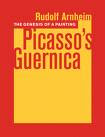Analysing a work of art by constructing a worldview that supposedly shaped the work of art is currently a fashionable trend in Christian engagement with the arts. While I think this is a valuable approach, I am sometimes uncomfortable with the way that the relationship between the worldview and the work of art is conceived. Thus, I offer five cautionary statements that are meant to clarify how we appreciate works of art:
1. Works of art do not have worldviews; they are to lesser and greater degrees shaped by them. People have worldviews.
2. Analysing the worldview of a work of art sometimes offers the critic a false sense of confidence upon which to base judgements. A work of art is not ‘better’ because it has clearly been shaped by one coherent worldview.
3. Worldviews are exclusive. They have the unfortunate consequence of putting works of art in the misleading categories of ‘Christian worldview’ or ‘secular worldview.’ While the magician may be able to pull these convenient rabbits out of his hat, it seems plain that works of art generally dwell within the grey areas between worldviews. In view of an accurate understanding of a work of art, it may not even be desirable to categorize a work of art according a worldview that appears to lie behind it.
4. A worldview is only one aspect of many that contribute to the meaning of a work of art. It is not, as Flannery O’Connor cautions us, ‘the string that a sack of chicken feed is tied with.’ Some folks might be under the impression that if you pick out the worldview ‘the way you pick the right thread in the chicken-feed sack, you can rip the story open and feed the chickens.’
5. The purpose of appreciating a work of art is not to determine the worldview that shaped it, but to allow the work of art to shape, challenge, question, and enrich our own worldviews.
Subscribe to:
Post Comments (Atom)




No comments:
Post a Comment